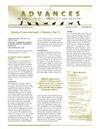Selamectin Spot-on: A Cure for Scabies in Rabbits
Q4 Veterinary
引用次数: 0
Abstract
Introduction: Mange in rabbits is a highly contagious zoonotic disease. The disease is caused mainly by Sarcoptes scabiei, Psoroptes cuniculi, Cheyletiella parasitovorax, and Notoedres cati. The most common forms of this disease in rabbits are body and ear mange. Mites infest animals through direct contact with infected animals or contaminated. Case report: An 8-month-old non-descript female rabbit weighing about 700 g was presented to the Teaching Veterinary clinical complex, Mettupalayam, Puducherry, India, with a history of scratching, pruritus and dried crusty lesions on the margins of the ears, snout, around the eyes and legs and patchy hair loss for the past 15 days. Rectal temperature was 38.4°C, heart rate was 210 bpm, respiratory rate was 40 breaths/minute, and the color of the conjunctival mucous membrane was pink. Other signs included inappetence with normal voiding habits and a thin body condition. The collected skin scraping from the affected areas was examined under the microscope with a 10x objective lens, confirming the presence of live motile Sarcoptes spp. Mite species could be determined through the morphological characteristics (adult mites are nearly circular with short legs, and the third and fourth pairs do not project beyond the margin of the body with terminal anus) under the microscopic examination of the skin scrapings. Therefore, 6% selamectin was applied topically on a single spot at the base of the neck. Supportive therapy with multivitamin (vitamin A, D3, E, B12) drops was given orally at 1 ml per day. Conclusion: The rabbit responded well to the treatments within 2 weeks.塞拉菌素:治疗兔子疥疮
家兔疥癣是一种高度传染性的人畜共患疾病。本病主要由疥疮绦虫、疥疮绦虫、卵黄寄生绦虫和猫nottoedres cati引起。这种疾病在兔子中最常见的形式是身体和耳朵癣。螨虫通过直接接触受感染的动物或被污染的动物而感染动物。病例报告:一只体重约700克的8个月大的未描述的母兔被送到印度普杜切里梅图帕拉亚姆的教学兽医临床中心,在过去的15天里,它在耳朵边缘、鼻子、眼睛周围和腿上出现了抓挠、瘙痒和干燥的硬皮屑病变,并出现了斑片状脱发。直肠温度38.4℃,心率210 bpm,呼吸频率40次/分钟,结膜黏膜颜色为粉红色。其他症状包括食欲不振,排尿习惯正常,身体消瘦。从患处采集的皮肤刮痧,在10倍物镜下观察,证实有活的活动疥螨存在。通过刮痧的形态特征(成螨近圆形,腿短,第三对和第四对不突出身体边缘,有末端肛门),可以确定螨的种类。因此,6%塞拉菌素局部应用于颈部底部的单个点。支持治疗给予多种维生素(维生素A, D3, E, B12)滴剂,每天口服1毫升。结论:治疗2周后,家兔反应良好。
本文章由计算机程序翻译,如有差异,请以英文原文为准。
求助全文
约1分钟内获得全文
求助全文
来源期刊

Advances in Small Animal Medicine and Surgery
Veterinary-Small Animals
自引率
0.00%
发文量
0
期刊介绍:
Each month, Advances in Small Animal Medicine and Surgery features abstracts of material from recent publications and presentations, followed by comments from specialists in the field. Small animal veterinarians and veterinary technicians gain new insight into specific topics and increase their skills in judging how to apply new tests and treatments in practice situations.
 求助内容:
求助内容: 应助结果提醒方式:
应助结果提醒方式:


